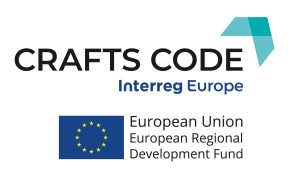In the CreaAction Hub, actors from the creative sector find natural collaboration opportunities, which are based on real needs and thinking outside the box.
CreAction collects key players from different creative sectors, the craft sector included, to work on real-life cases and to find opportunities to collaborate. CreAction Hub addresses the challenge of creating and innovating new business through clusters and looking beyond the traditional solutions which limit creating new opportunities, business, business models, innovation and income.
By recognising the value and potential of the creative sector to other sectors, CreAction creates the opportunity to transfer knowledge and expertise to other sectors, including for example, industry.
The collaborative and hub model of working improves the operational conditions of companies and increases the standard of work. The companies present themselves at hub events using pecha kucha presentations. This can create new opportunities, natural opportunities for collaboration, beyond the cases worked at the hub. The role of the facilitators are important in the CreaAction Hub model: they are professional design, business, development and other experts, and they spar and guide actors through the process towards a concrete goal, prepare and document the work, and open and activate discussions.
The participants are provided real cases. The first Hub sessions are more open after which the focus narrows on the selected case and continues with a smaller group working towards finding a concrete solution to the problem, using a design approach.
Resources needed
- A space for the hub
- People: participants, facilitators and others
- Fees for speakers
- Cases – offered by the externals, but also born in Hubs. These need to be user-oriented (pull) and not to follow the ‘push’ model. Hence it is also a newer concept on the sector.
Evidence of success
Concrete results so far
1. Companies seem to willingly join Hub activity and they are active (this cannot be taken for granted in Finland)
2. Concrete user-oriented results as outcomes from the hub activity. In their normal daily activities these companies do not have time to work on such
3. Examples used to open thinking beyond the obvious solutions
4. Solutions for the organisations’ problems (for those who offered cases) which can create new business and process innovation.
Difficulties encountered
-Obtaining cases to work on
-Prejudice of the other sectors towards the value of the creative sector towards the obvious, e.g. graphic design. Instead e.g. ballet could bring new ideas for robotics.
-Overall opening the minds beyond the obvious and going beyond the ‘easy’ solutions.
Potential for learning or transfer
The practise can create real collaboration between the actors of the creative sector and other sectors, and hence transfer the value of the creative sectors there and for the benefit of the end-users. The process as such is easy and does not require many resources. The main focus is on the human capital, cases, examples and shifting the mentality. The practise should be easily transferrable to any geographic area, including those with less actors on the creative sector (like in the case area).
Tags: Business, Community, Creative, Innovation








